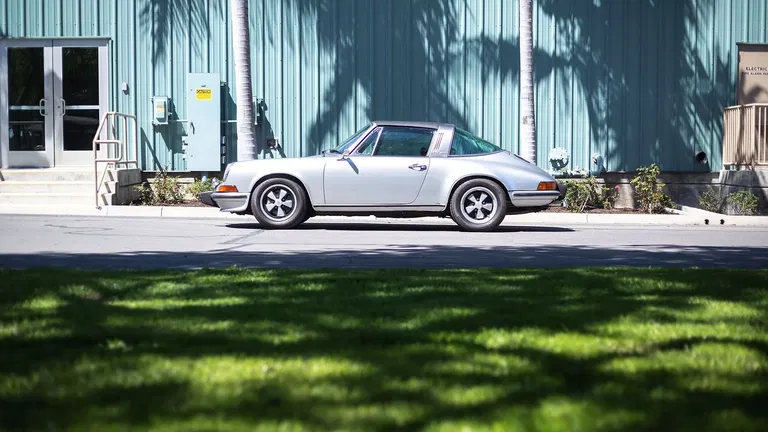The magnesium crankcase technology developed for use in the 911R and several race cars was introduced for the first time in the production models, a weight savings of approximately 22lbs. This iteration of the 2.0L was a true race-bored engine with the highest compression of any early 911 motor, and the foundation of the 1973 Carrera RS and many Le Mans competition motors. As the 911S the top-of-the-line, high-performance model, it also received Bosch mechanical fuel injection and was capable of producing 170 horsepower from the 2.0-liter flat-six.
Many other changes were made to the interior and additional or improved safety features debuted as standard across the model range. On the exterior of the vehicle, these include recessed door release buttons, matted black wiper arms and blades, a larger rearview door mirror, a laminated glass windshield, an electrically heated rear windshield, and quartz-halogen headlights. The interior features include a rubber ashtray handle, anti-glare and deformable instrument panel, hazard flashers, a lighted glove box, and a day/night rearview mirror. Revised interior door panels incorporated larger pockets and recessed door release handles.
This example, chassis #119300744, was delivered new to its first owner Leo F. Rapp in Sunnyvale, California on May, 22, 1969. It was ordered with a number of options: a Chrome Fold-up lamp for the engine compartment, a rear towing hook, Porsche lettering on the doors in black, Engine noise suppression, an antenna with a loudspeaker in the dashboard, a lockable trunk, an ignition lock, chrome side molding, tinted windshield and side glass, a rear window wiper, and Michelin tires. It was configured with Sand Beige paintwork and a Beige Leatherette interior. Technical notes in the Porsche maintenance booklet document in detail each instance of the 911S’s service, beginning in May 1970 and spanning over 13 years with the last entry dated August 1983. Additionally, it documents each of the first six owners with the last entry dated July 2010. A spreadsheet and a litany of invoices outline the last owner’s parts and labor purchases between 2010 and 2018, including a near complete interior set and an interior restoration by Tony Garcia at Autobahn Interiors in San Diego.
Chassis #119300744 currently presents in good mechanical condition and runs strong, and retains much of its original paint. It retains its numbers-matching engine and transmission, It is an excellent candidate for a complete restoration, or to be driven regularly as a driver-level entry into the world of the early long-hood 911s.
Continue reading

































































































